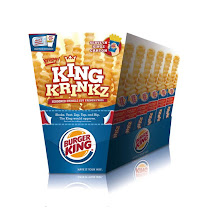
• The campaign against salt in processed foods and restaurants has intensified with the CDC (Centers for Disease Control) now joining the campaign to reduce salt. The CDC has released figures show the average American consumes 3,400 mg of sodium per day, 15x the amount needed (U.S. Dietary Guidelines recommend 2,300 mg tops), of which 80% comes from processed foods and restaurants. What’s more, it claims a 50% reduction in sodium in processed foods could save 150K lives and $10bn in health costs each year. Studies show sodium levels have doubled since 1970s as Americans consume more convenience foods in and out of the home. Manufacturers, under pressure to reduce fats and sugars, have upped salt to maintain flavor. Salt is also a valuable preservative in shelf-stable foods. One of the biggest challenges for individuals trying to limit salt is their complaint about bland food.
But health professionals have discovered links to osteoporosis, kidney failure and stomach cancer (excess sodium’s link to higher blood pressure has been recognized for decades). With heart attacks and strokes felling upwards of 850K people each year, high blood pressure is second only to smoking as a preventable cause of illness and death according to New York City Health Commissioner Thomas Frieden. Fifty million Americans have hypertension (blood pressure at or above 140/90 mm/Hg), while another 20MM are prehypertensive (blood pressure from 120/80 to 139/ 89 mm/Hg). Virtually all Americans will develop hypertension as they age, so salt reduction should ideally begin as soon as possible. Nearly 90% of Americans eventually develop high blood pressure as they age. The Grocery Manufacturers Association (GMA) is fighting government requirements to reduce salt, saying education is needed to alert consumers to the need for reducing their sodium intake. The American Heart Association, the American Medical Association (AMA) and the World Health Organization (WHO) all urge lower salt consumption.
• Unilever has announced plans to reduce sodium and salt from 22,000 of its products worldwide by 2010. The company claims to have removed over 9.1MM kilos of salt already. The reduction so far has been through recipe reformulations, though the company’s research arm is looking at innovative ways to replace the preservative qualities of salt by other means.
• Cutting salt isn’t as easy as it sounds-- raw chicken from the supermarket, for example, is often bathed in salt water to make it plumper (and hold water, thereby weighing more). Labels offer confusing information, with sodium totals sometimes tied to individual servings and not the entire package. Labeling regulations allow a surprising latitude in descriptors, too: products can trumpet themselves as “sodium free” even with up to 5 mg per serving, while “very low sodium” can be up to 35 mg and “low” up to 140. The claim of “reduced sodium” is meaningless, other than saying the current formulation has reduced its sodium content by 25% from whatever its earlier numbers were. “No added salt” does not mean “salt free.” Some typical processed foods and their sodium content includes Au Bon Pain blueberry muffin (500 mg), Marie Callender’s Frozen Fried Chicken (1,590 mg), ShopRite Cottage Cheese, ½ cup (450 mg), Kellogg’s Raisin Bran, 1 cup (350 mg), Kraft Easy Mac Macaroni & Cheese, 1 cup (700 mg), and Oscar Mayer Baked Ham, 3 slices (780 mg). Experts encourage parents to cook with less salt, as kids who are accustomed to less salt will likely not develop a “salt tooth” just as those who don’t have access to candy in childhood are less likely to have a “sweet tooth.”
• Sodium as a hot-button issue has been prominent in the U.K. for over 5 years with food manufacturers and restaurant chains cutting salt by up to 30% so far. Average daily consumption there is down from 9.5 g to 8.6 g.
• One reason for that bloated feeling after eating out is what’s called a “sodium load.” Flushing the extra sodium from the body usually takes several days.
Excerpted from BSLG's weekly subscription news reader service Food Business News. To subscribe or for information about licensing, contact Broad Street Licensing Group (tel. 973-655-0598)
.gif)











No comments:
Post a Comment
Note: Only a member of this blog may post a comment.